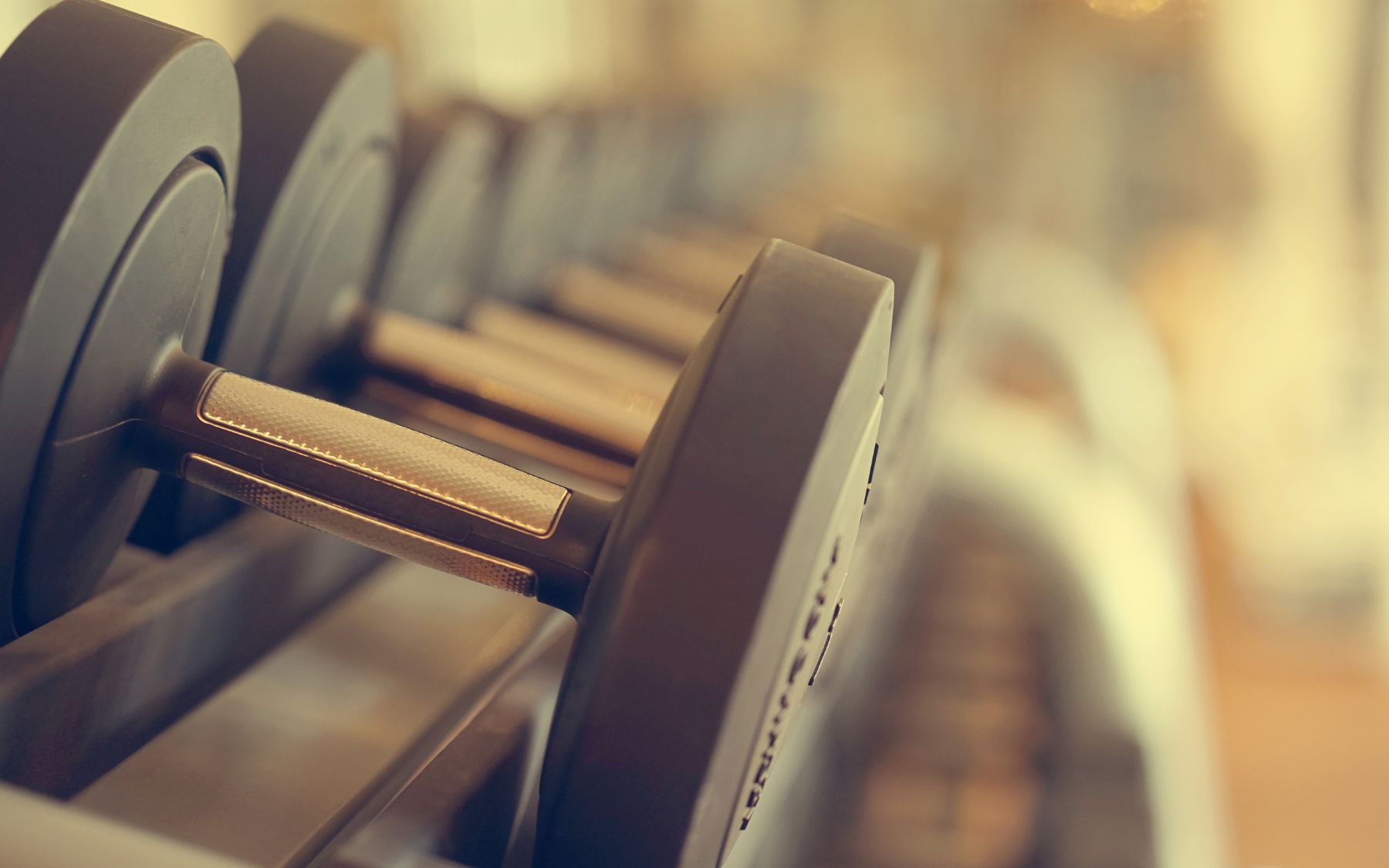
Men’s Fitness – Is There Really a Difference to Women’s?
One common question I am asked is whether men and women can train together in the same way? Men and women are often told they need completely different routines – but do they really? While there are obviously biological differences between the two, when it comes to building strength, fitness, and long-term health, the gap is far smaller than you might think. In fact, the foundations of effective training – movement, consistency and recovery – are remarkably similar for everyone. So, is there really a difference between men’s and women’s fitness? Let’s take a closer look.
1. The biological baseline: what the research says
1. We know from research that it is harder for women to maintain muscle mass than men – with the drop in oestrogen during perimenopause and menopause muscle builds more slowly in women and breaks down faster. Women may experience joint stiffness and longer recovery time and we know how bone density in women decreases from age 35+. In comparison men have 10–20× more testosterone, which directly drives muscle growth and repair as well as retention.
2. A consensus statement from the American College of Sports Medicine emphasises that adult males are typically faster, stronger and more powerful than females of similar age/training status – due to factors such as greater muscle mass, larger heart and lung volumes, higher testosterone.
3. One study found that, during short and maximal exercise, male students significantly out-performed female peers in strength and power tasks, partly because of lower fat-mass, higher lean mass.
4. On the flip-side, research suggests that when it comes to health outcomes (e.g., cardiovascular mortality), women derive more benefit per unit of exercise than men. For instance, a large study found women achieved similar benefits with ~ 2 and a half hours of moderate-vigorous activity per week, whereas men reached a plateau at ~5 hours. (see my previous blog for more on this here)
So what does this mean?
It means: yes – there is a baseline difference in anatomy and physiology. But it doesn’t mean women can’t do the same exercises, or that men must train in a completely different way. The gap often lies in how we train, how we recover and why we train.
2. Where the difference matters – and where it doesn’t
Let’s break this down into practical areas:
a) Strength, muscle mass & power
- Men generally have more absolute muscle mass and stronger single-effort power output (due to bigger muscle cross-section, more type II fibres, higher testosterone) which gives them an edge in pure maximal lifts or sprints.
- But, when strength or power is scaled relative to body size, or when looking at muscular endurance or functional movements, the difference shrinks. Many women make huge gains, lift heavy and improve strength dramatically.
- Important point: Your starting point, training history and consistency matter far more than gender.
b) Endurance, cardiovascular and health outcomes
- Surprisingly perhaps, women seem to get proportionally more health benefit for a given amount of movement in many large-scale studies.
- That means: whether you’re male or female, moving more (and moving consistently) pays off – not just for performance but for longevity.
- For endurance type efforts (cycling, swimming, running longer distances), the gender gap in elite performance is narrowing when considered relative to body mass and for events favouring fatigue resistance.
c) Recovery, hormones, and timing
- Training stress, recovery needs and hormonal influences (e.g., menstrual cycle for women) are often cited as “gender differences”. But many recent studies suggest variability is less than we thought — for example, a study found women’s physical activity levels were less variable than men’s, and menstrual cycle-related variation in activity was minimal.
- What does matter for both sexes is recovery-sleep-nutrition: If you train hard, but don’t recover, the gains stall. I always emphasise that habit + consistency + recovery beat sporadic, short bursts of intensity.
- Because of structural/hormonal differences though, training and recovery strategy might need a small tweak: for example prioritising mobility, joint health, and longer-term recovery as we age (especially for women in peri-menopausal years or men with declining testosterone).
d) Goals & outcomes
- If your goal is “feel strong and live long”, the tactics for men and women overlap hugely: strength training + cardio + mobility + good nutrition + adequate rest.
- If your goal is maximal bench press, Olympic lifting, sprinting, then yes – gender differences show more clearly (because the event is extreme). But for most of us in “real-life fitness” the difference is modest and often irrelevant.
- I always focus on functional movement, full-body strength, mobility, longevity – all of which apply to men and women.
3. Practical training implications for men
As many of you have asked me specifically about men’s fitness, here are my practice-based suggestions with the “difference” in mind – for men wanting smart, sustainable fitness:
- Lean into strength training
- Your physiology gives you a relative advantage in strength and power, so don’t shy from increasing your weights as your strength increases – progressive overload.
- But remember: technique, joint control and recovery matter even more than how heavy you lift.
- Work on both upper body (often neglected) and lower body (key for posture, knee/hip health, longevity).
- Your physiology gives you a relative advantage in strength and power, so don’t shy from increasing your weights as your strength increases – progressive overload.
- Always add functional, full-body movement
- Don’t just train isolated “big lifts”. Incorporate body-weight circuits, mobility work, and movement patterns that translate to everyday life (bending, lifting, rotating).
- Think strength that supports real life, not just gym metrics.
- Don’t just train isolated “big lifts”. Incorporate body-weight circuits, mobility work, and movement patterns that translate to everyday life (bending, lifting, rotating).
- Don’t overlook cardio and endurance
- Even if your goal is strength, include at least 1-2 sessions of moderate cardio per week (brisk walk, cycle, row) to support heart health and fat metabolism.
- The research shows that movement for longevity is as important as max strength.
- Even if your goal is strength, include at least 1-2 sessions of moderate cardio per week (brisk walk, cycle, row) to support heart health and fat metabolism.
- Prioritise recovery
- Strength training breaks you down; recovery builds you up. Sleep, nutrition, hydration and mobility = non-negotiables.
- Especially as men age: testosterone declines, recovery slows slightly – so adapt your volumes, include regenerative work and listen to your body.
- Strength training breaks you down; recovery builds you up. Sleep, nutrition, hydration and mobility = non-negotiables.
- Focus on what you can control
- Gender aside, your consistency, effort, rest and nutrition are your biggest levers.
- Don’t get caught in “but women do X differently” or “men have to do Y” – focus on what works for you.
- Gender aside, your consistency, effort, rest and nutrition are your biggest levers.
4. Practical training implications for women (and how that informs men too)
Although the focus of this blog was men’s health, a quick glance at women’s training mindset adds value (and men and women often train alongside each other, so it’s useful to understand):
- Women may derive similar or greater health gains from lower volumes of exercise, so the pressure to “do more / bigger / heavier” may be less necessary – but still, the focus should be on progressive overload and continuing to challenge yourself.
- Many women excel in endurance-type work, movement quality, mobility and recovery. Men can learn from that: less ego-lifting, more movement fidelity, more focus on joint health and longevity.
- Hormonal fluctuations (menstrual cycle, menopause) may add complexity, but many of the fundamentals remain the same: strength + cardio + mobility + rest.
For men this means: adopt the consistency, quality, movement-focus and you’ll elevate your training.
5. My bottom line: Is there really a difference?
Yes – but not in the way many think.
- The difference lies mostly in absolute strength, muscle mass and extreme performance metrics (which only matter for elite levels).
- For general health, longevity, strength, mobility and functional fitness, the difference is small and won’t stop you from training, progressing and living stronger.
- What matters far more: your programme quality, your consistency, your recovery, your nutrition. Gender is one piece of the puzzle – but not the dominant one.
6. What you can start this week
Here are three simple actions you can take – whether you’re a man or woman reading this:
- Schedule three strength-sessions, focusing on compound lifts (e.g., squat/press/pull) plus functional movement (e.g., lunges, single-leg work, rotational core).
- Pick one cardio movement you enjoy (brisk walk, row, bike) for 20-30 minutes, added into your week.
- Set aside one “mobility/recovery” block – 10-15 minutes of stretching, foam-rolling, deep breathing, especially post-workout.
Consistency here will matter more than chasing “more weight, more reps, more sessions” immediately.
Final thought
So, when you hear that men and women should train in completely different ways, take it with a pinch of salt. Yes, our bodies have their unique characteristics, but the fundamentals of good fitness remain the same: move well, challenge your body, recover properly and stay consistent. Whether you’re training for strength, energy or overall wellbeing, it’s these habits – not your gender – that make the real difference.
As always — any questions, get in touch.
Caroline x



